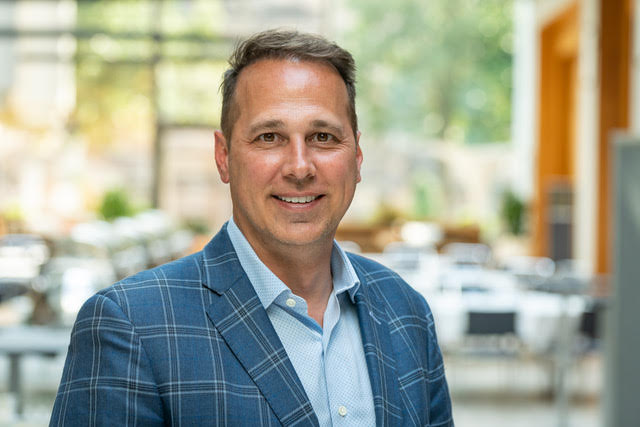Airways
Why is airway important in orthodontics?
A constricted airway can severely impact the growth and development of a child and should be considered when evaluating a child’s overall health. Dr. Dischinger uses his i-CAT FLX (3D cone beam x-ray) to take a CT scan and evaluate the airway of EVERY patient. If a child under the age of 12 has a constricted airway, Dr. Dischinger is able to initiate his airway protocol which takes advantage of the growth of the child to expand the airway. This can often prevent obstructive sleep apnea and improve overall health of a child
Sleep Apnea

Sleep apnea is a disorder characterized by abnormal pauses in breathing or instances of abnormally low breathing during sleep. Each lapse in breathing can last ten seconds to multiple minutes, and may occur 5 to 30+ times an hour. This disorder prevents deep sleep that refreshes the body, and sufferers are frequently drowsy during the day.
Types of Sleep Apnea
There are three forms of sleep apnea. The most common is called Obstructive Sleep Apnea (OSA) and represents about 84 percent of cases. It occurs due to a physical block of airflow, commonly resulting in snoring. Though rare, during Central Sleep Apnea (CSA), breathing is interrupted by a lack of respiratory effort. Some people suffer from mixed or complex sleep apnea, which is a combination of OSA and CSA.2/3 Text
Signs of Sleep Apnea
Oftentimes, an individual with sleep apnea is unaware of having difficulty breathing, even after waking up short of breath. Others witnessing the individual during episodes usually reveal the problem.
The following symptoms can indicate the presence of sleep apnea. If you notice one or more of these, we would be happy to refer you to a sleep apnea specialist.
- Daytime fatigue
- Slower reaction time
- Vision problems
- Difficulty paying attention or working effectively
- Insomnia or difficulty sleeping
- Sleep paralysis
- Loud snoring at night
- Waking up at night short of breath
- Snorting or choking sounds during the night
- Headaches in the morning
ENJOY A BEAUTIFUL SMILE WITHOUT THE METAL MOUTH!
Frequently Asked Questions:
The consultation typically lasts about 80 minutes.
The first 15 minutes of the consultation is dedicated to taking full orthodontic records including photos and x-rays at no charge which will assist our orthodontists in planning you or your child’s treatment.
During the next 30 minutes you will meet our orthodontist and have a 1-on-1 discussion with our treatment coordinator about possible orthodontic treatments. During this time, you will have the opportunity to discuss any orthodontic and dental problems you may be concerned about.
There are 5 essential questions that we will cover during the consultation:
- Is there an orthodontic problem, and if so, what is it?
- What treatment options are available to you to correct the problem? (i.e. braces, clear aligners, expander, etc.)
- What is the estimated length of treatment?
- What is the total cost of treatment?
- What payment options are available?
No, the consultation is completely FREE. This includes an examination, all photos and x-rays (orthodontic records), and a 30 minute consultation with our treatment coordinators and orthodontists.
We want you to be completely comfortable and well-informed in your decision making process.
There are no hidden fees. The entire consultation, including all photos, x-rays and the assessment by our orthodontist are completely free.
The cost of your treatment will vary depending on your specific dental requirements. Once we complete a new patient exam and create a treatment plan for you, you will meet with a treatment coordinator to discuss the costs and payment plans available to you. We will work with you to create a payment plan that is tailored to your needs and budget.
Yes! Kindly give us a call and we will try our best to accommodate you. If our schedule permits, we may be able see multiple family members back to back.
Of course! Second opinions are welcome! We hope that at the end of the consultation, you are educated, informed and able to make the best decision for you and your family.
Our services are provided by orthodontists. Orthodontists are dentists who, after finishing 4 years of dental school, then went to orthodontic school for another 3 years for extensive training with braces, clear aligners, expanders, bite correction appliances, etc. The only thing our doctors do – all day, every day – is straighten teeth! Our orthodontists will straighten teeth on hundreds of patients per year and thousands of patients in their lifetime.
On the contrary, most general dentists don’t do any orthodontics. The few that do treat only a handful of cases per year, and usually these cases are very simple cases (ie. retreatment of a patient who previously had braces but stopped wearing their retainers and teeth shifted slightly).
Orthodontics is something you only want to go through and pay for once, so trust your smile to a specialist
If you are in need of treatment, an orthodontist will recommend an appliance specific to your dental needs. Some of the treatment options available include: traditional braces, clear braces and clear aligners.
Treatment times vary depending on your specific course of treatment, but with the new cutting-edge technology, the average treatment time is 18-24 months.
Brush your teeth by using a regular soft toothbrush. Brush down from the top and then up from the bottom on each tooth; always brushing away from your gums. Use a gentle sawing motion to work the floss on each side of the two teeth the floss is between. Be careful not to pull with too much force around the archwire.
That varies per patient but there is new technology that uses memory shape, heat activated wires that work without needing painful adjustments, decreasing the amount of office visits necessary to complete treatment. The average time between visits can range from 6-8 weeks. As you come close to finishing treatment, the doctor may want to see you more often, typically between 4-6 weeks during your last few months, to fine tune your final tooth movements.



